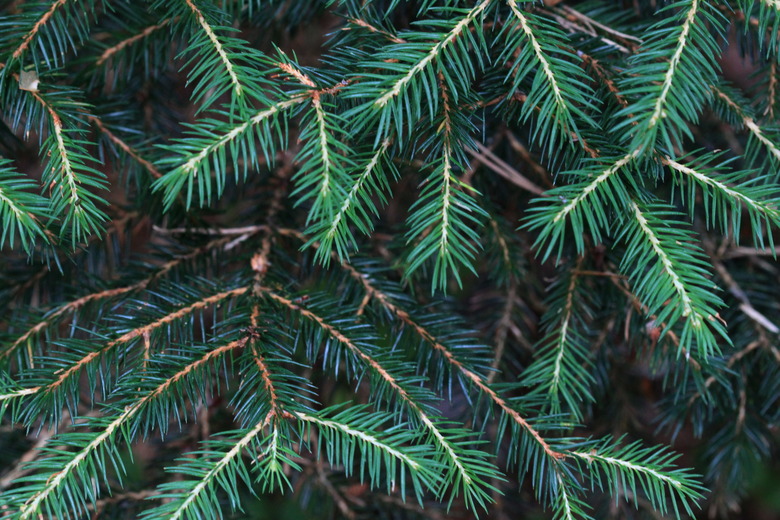How To Identify Types Of Pine Trees
There are more than 100 different kinds of pine trees sprouting up in temperate climates all over the world. In North America, there are a distinct 36 pine tree varieties. Pine tree identification depends on the bark, trunk and how the pine tree needles are clustered.
Pine Tree Needles
The acicular-shaped leaves of all pine tree varieties are referred to as "needles" for their long, thin shape. The spindly leaves grow in spirals around the twigs that sprout from the thicker branches of the pine tree. The needles live in **spirals called "candles"** that fall from the tree after about two years to create a carpet below the tree.
The carpet of old needles under the pine tree is called "duff." This duff can smother other varieties of trees from growing, giving the pine an edge in populating the area. It can also catch fire and quickly burn out, stopping a lightening fire from spreading to more flammable types of trees.
- There are more than 100 different kinds of pine trees sprouting up in temperate climates all over the world.
- Pine tree identification depends on the bark, trunk and how the pine tree needles are clustered.
- The acicular-shaped leaves of all pine tree varieties are referred to as "needles" for their long, thin shape.
The waxy outer layer of the pine tree needles helps to prevent the tree from losing water through its tender outer parts. This helps the tree to do well in drought conditions. When brush fires pop up in pine tree country, the **waxy needles help the tree from catching fire.**
Pine Bark Characteristics
Pine bark is typically a reddish-brown or a light-gray color with blackish edges. It is rough to the touch and is helpful in keeping pests away from gardens. It is also used as a hardy mulch that can keep out bugs and heat while retaining moisture and warmth around the roots.
- The waxy outer layer of the pine tree needles helps to prevent the tree from losing water through its tender outer parts.
Pine Tree Cones
The pine tree varieties that populate your backyard or popular camping places have either male or female pine cones that fall from the branches of the tree. The two pine cones gather at the base of the tree, and wind and animals assist in helping to pollinate the pine cones.
A female pine cone has fat, rounded woody petals that branch from its thick middle. Male pine cones are more cylindrical in shape and hold tightly to the pollen that will fertilize the blossomed branches of the female pine cone.
Types of Pine Trees
- Sugar Pine – The massive Pinus lambertiana is one of the largest
species of pine. It has long, deeply furrowed bark that ranges from a light-brown cinnamon color to grayish brown. The twigs that grow perpendicular to the long, nearly horizontal branches are gray-green and reddish-tan as they age. Cones grow near the ends of the branches in clusters.
- Eastern White Pine – Two states claim the Pinus strobus as its state tree: Maine and Michigan. Its unique identifying markers
include the branching rings on the tree. It is the only five-needled Eastern pine. The Eastern White's needles bundle in clusters that look like brushes on the end of slender twigs. It is easily one of the tallest of the pine trees, coming in at a towering 160 feet or more. They grow around 3 feet each year.
- Bristlecone Pine – The thick twisted trunks of these unique
pine trees create dramatic shapes as they grow. Under the right conditions, they can grow to be more than 1,000 years old, such as in the wind-swept hills of the Great Basin National Park in Nevada.
- Sumatran Pine – This is one of the rare pines that prefers
humidity. The Sumatran pine thrives south of the equator in rain forests. It prefers subtropical temperatures to grow its thin needles that can grow up to 10 inches in length. The Sumatran pine is also one of the largest, growing to 100 to 160 feet in height.
- The pine tree varieties that populate your backyard or popular camping places have either male or female pine cones that fall from the branches of the tree.
- Under the right conditions, they can grow to be more than 1,000 years old, such as in the wind-swept hills of the Great Basin National Park in Nevada.
* Sumatran Pine – This is one of the rare pines that prefers humidity.
